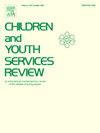“我从这里要去哪里?”":青年人在心理卫生服务机构的转诊程序、等候名单和获取途径方面的经历
IF 1.7
2区 社会学
Q1 FAMILY STUDIES
引用次数: 0
摘要
背景:对青年时期的心理健康问题进行有效干预有助于提高生活质量和降低青年自杀死亡率。年轻人往往等到他们的痛苦变得严重时才寻求帮助,而服务因素已被确定为影响他们如何获得帮助干预措施的因素。目的探讨青少年心理健康服务的使用情况及干预措施。方法采用建构主义扎根理论方法(Charmaz, 2014)分析从爱尔兰西北部16-25岁的年轻人(n = 18)收集的数据,探索他们向服务机构寻求心理健康帮助的经历。通过焦点小组(n = 6)和访谈(n = 14)收集数据,两名参与者同时参加。确定了两个子类别:1。导航管理和2。获得帮助干预措施和主要调查结果表明,由于服务途径错综复杂,包括冗长的转诊流程和等候名单,特别是在公共卫生保健系统内,获得服务可能很困难。实际的寻求帮助的途径被绘制出来,分析揭示了一个“转诊循环”的存在,在这个循环中,有严重痛苦的年轻人在没有临时支持的情况下不断被转诊,这被发现有助于自杀,并不成比例地影响到有护理经验的年轻人。最常见的干预措施包括精神药物和CBT。参与者报告说,他们最重视的干预措施包括合作和倾听支持。结论确保年轻人及其家庭更容易获得与发展相适应的干预措施和及时的服务反应,对于支持年轻人解决心理健康问题和改善他们的生活质量至关重要,这可以减少消极的生活结果,包括自杀死亡。本文章由计算机程序翻译,如有差异,请以英文原文为准。
“Where am I meant to go from here?”: Young people’s experiences of navigating referral processes, waiting lists and access pathways in mental health services
Background
Early intervention for mental health problems during youth can contribute to increased quality of life and the reduction in the rates of youth death by suicide. Young people often wait until their distress becomes severe before seeking help and service factors have been identified as impactful in how they access helping interventions.
Objective
This aim of this research was to explore young people’s experiences of accessing mental health services and the interventions provided.
Methods
Constructivist Grounded Theory methods (Charmaz, 2014) were used to analyse data collected from young people (n = 18) aged 16–25 years and living in the North West of Ireland, exploring their mental health help-seeking experiences to services. Data were collected through a focus group (n = 6) and interviews (n = 14), with two participants taking part in both.
Findings
Two sub-categories were identified, 1. Navigating administration and 2. Accessing helping interventions and key findings demonstrate that accessing services can be difficult due to convoluted service pathways that can include lengthy referral processes and waiting lists, especially within public healthcare systems. Actual help-seeking pathways were mapped, and analysis revealed the existence of a ‘referral loop’ where young people with severe distress were continuously referred without interim support, which was found to contribute to suicidality and disproportionately affect care-experienced youth. The most common interventions included psychopharmaceuticals and CBT. Participants reported valuing interventions that included collaboration and listening ear support most.
Conclusion
Ensuring that young people and their families have easier access to developmentally appropriate interventions and timely responses from services is essential in supporting young people with their mental health problems and improving their quality of life, which can reduce negative life outcomes, including death by suicide.
求助全文
通过发布文献求助,成功后即可免费获取论文全文。
去求助
来源期刊

Children and Youth Services Review
Multiple-
CiteScore
6.30
自引率
6.10%
发文量
303
期刊介绍:
Children and Youth Services Review is an interdisciplinary forum for critical scholarship regarding service programs for children and youth. The journal will publish full-length articles, current research and policy notes, and book reviews.
 求助内容:
求助内容: 应助结果提醒方式:
应助结果提醒方式:


